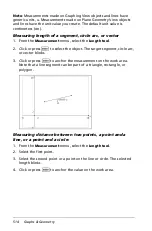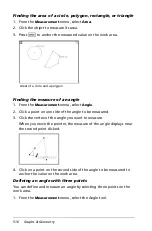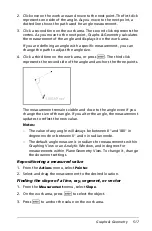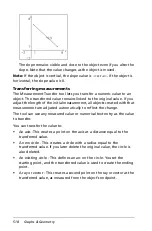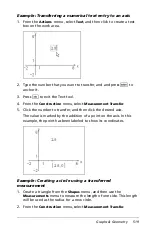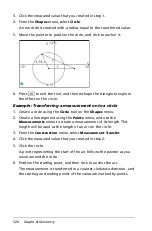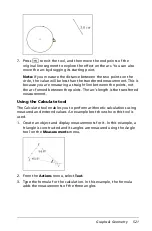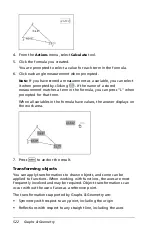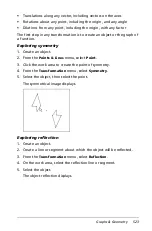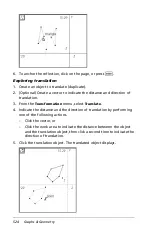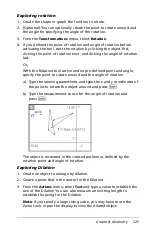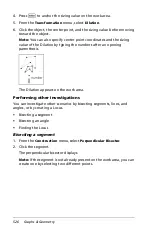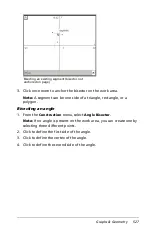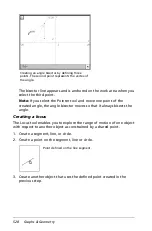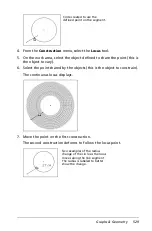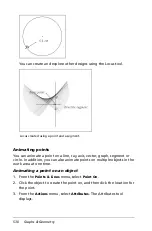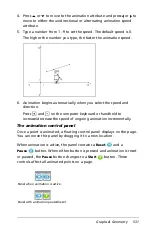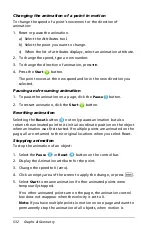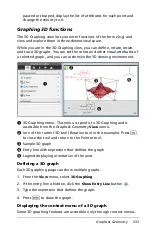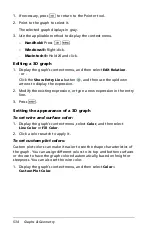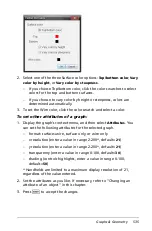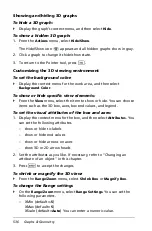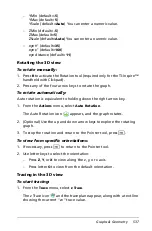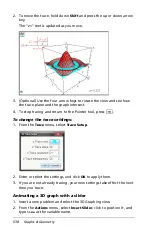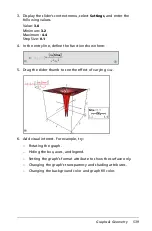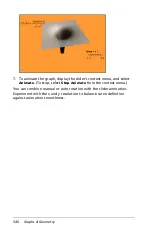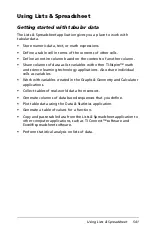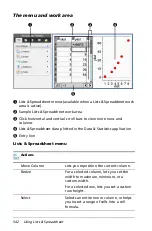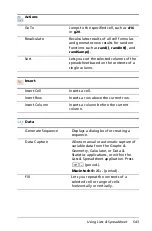
528
Graphs & Geometry
The bisector line appears and is anchored on the work area when you
select the third point.
Note:
If you select the Pointer tool and move one point of the
created angle, the angle bisector moves so that it always bisects the
angle.
Creating a locus
The Locus tool enables you to explore the range of motion of one object
with respect to another object as constrained by a shared point.
1. Create a segment, line, or circle.
2. Create a point on the segment, line or circle.
3. Create another object that uses the defined point created in the
previous step.
Creating an angle bisector by defining three
points. The second point represents the vertex of
the angle.
Point defined on the line segment.
Summary of Contents for TI-Nspire
Page 38: ...26 Setting up the TI Nspire Navigator Teacher Software ...
Page 46: ...34 Getting started with the TI Nspire Navigator Teacher Software ...
Page 84: ...72 Using the Content Workspace ...
Page 180: ...168 Capturing Screens ...
Page 256: ...244 Embedding documents in web pages ...
Page 336: ...324 Polling students ...
Page 374: ...362 Using the Review Workspace ...
Page 436: ...424 Calculator ...
Page 450: ...438 Using Variables ...
Page 602: ...590 Using Lists Spreadsheet ...
Page 676: ...664 Using Notes You can also change the sample size and restart the sampling ...
Page 684: ...672 Libraries ...
Page 714: ...702 Programming ...
Page 828: ...816 Data Collection and Analysis ...
Page 846: ...834 Regulatory Information ...
Page 848: ...836 ...

